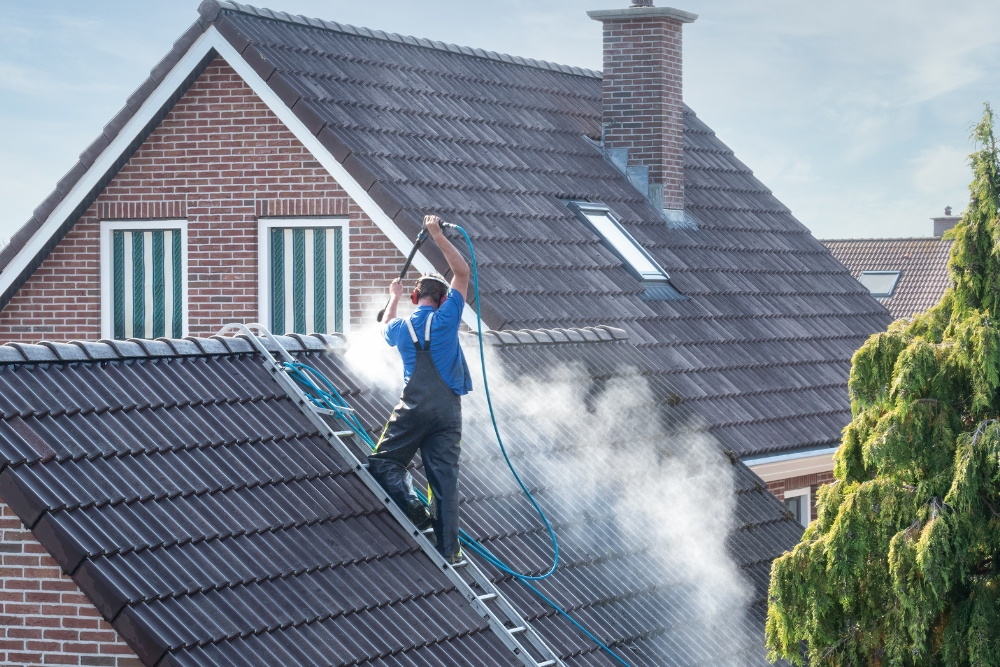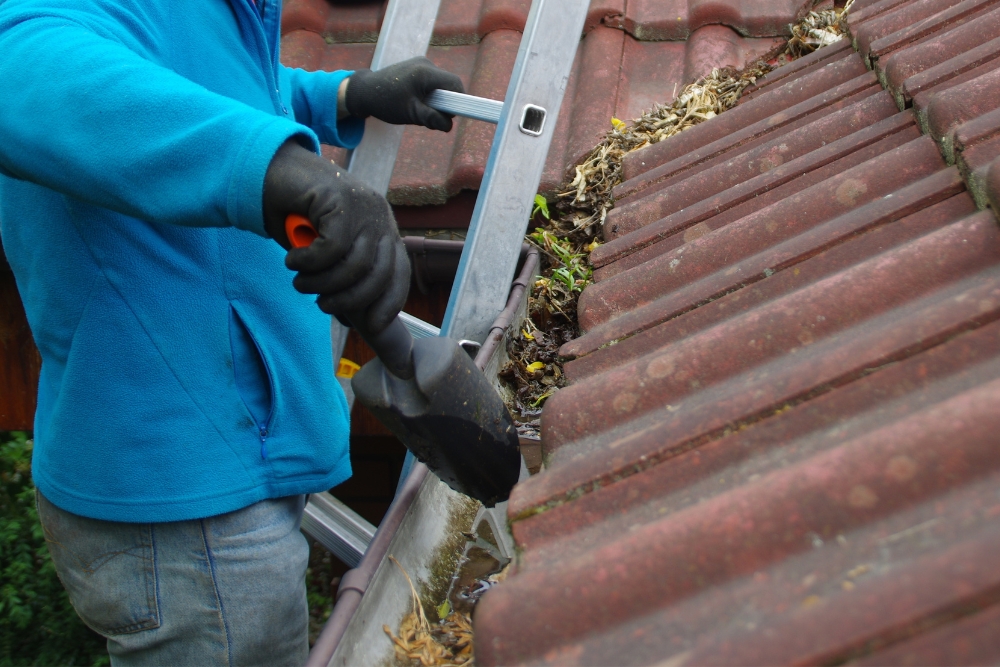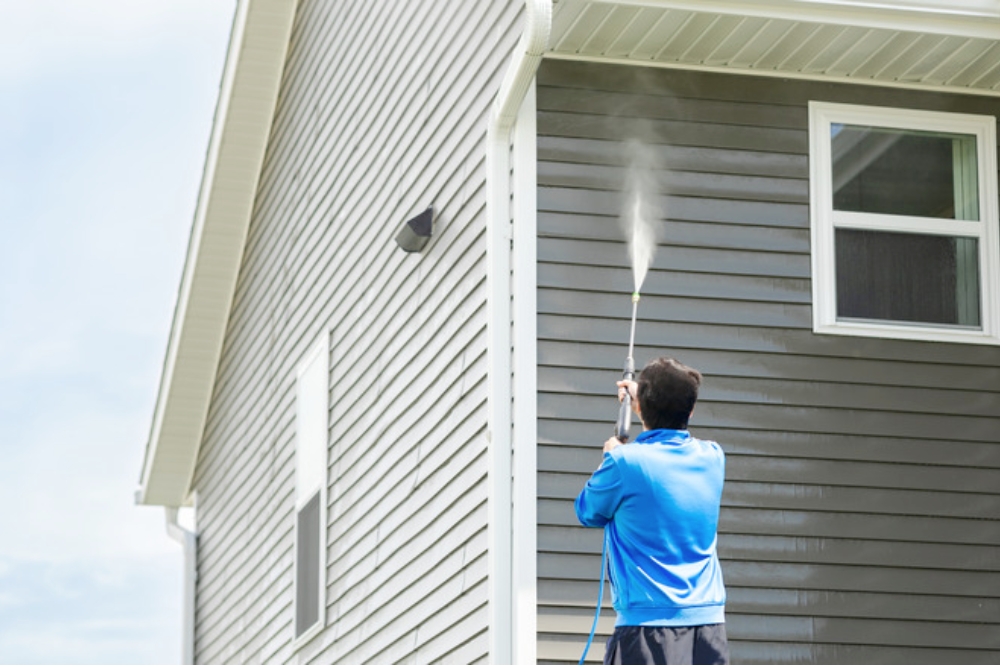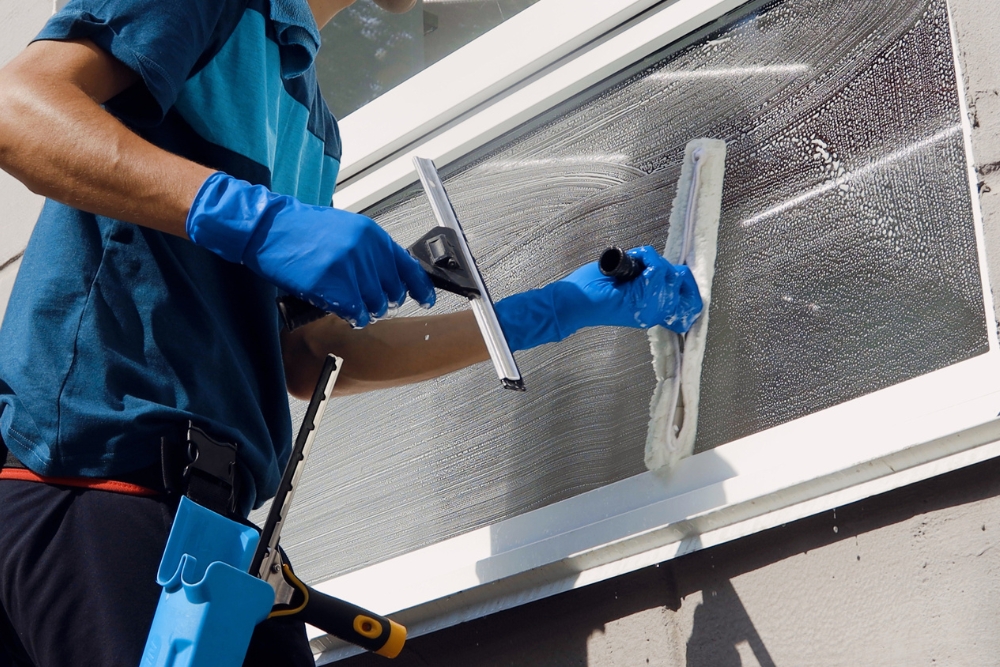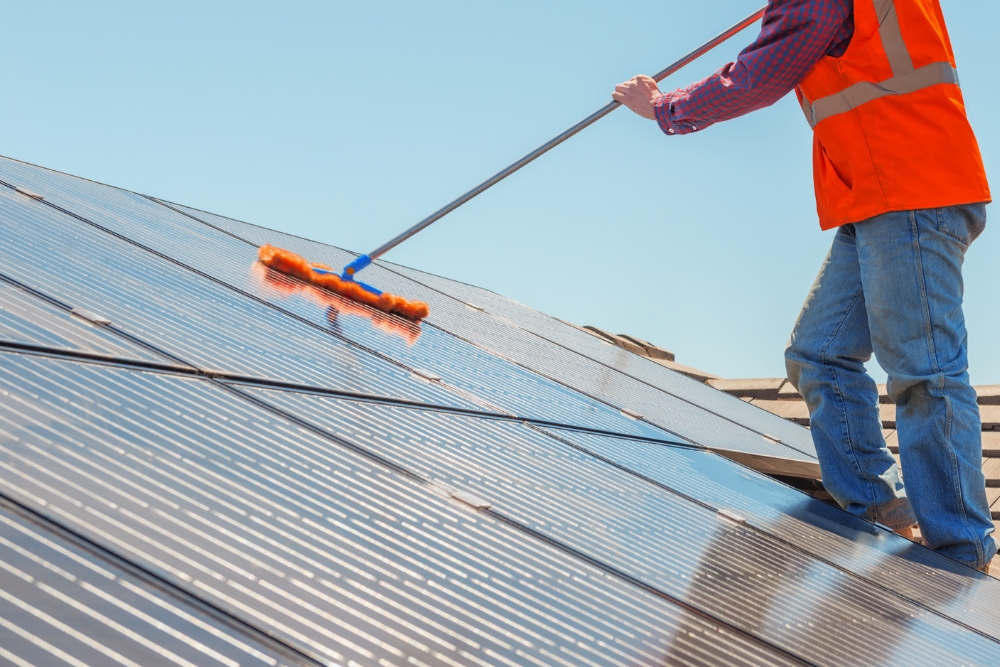How Often Should I Gutter Cleaning?
Gutters are often overlooked components of a home's exterior, yet they play a critical role in safeguarding your property against water damage. Understanding the importance of gutter cleaning is essential for homeowners to maintain the integrity of their homes and prevent costly repairs.
Gutters act as the first line of defense against water intrusion, channeling rainwater away from your roof, walls, and foundation. Without proper maintenance, gutters can become clogged with leaves, twigs, and debris, impeding the flow of water and leading to a host of problems.
Water damage caused by clogged gutters can manifest in various ways, from unsightly stains on exterior surfaces to structural issues such as foundation cracks and roof leaks. Additionally, stagnant water in clogged gutters provides an ideal breeding ground for pests like mosquitoes and can contribute to mold growth, posing health risks to occupants.
Given the critical role gutters play in protecting your home, regular cleaning is essential. However, determining the optimal cleaning frequency depends on several factors, including climate, surrounding vegetation, and roof characteristics.
Understanding the Importance of Gutter Cleaning
Gutters are an integral part of your home's exterior, serving to protect it from water damage caused by rain, snow, and ice. Understanding why gutter cleaning is essential helps homeowners prioritize this aspect of maintenance.
The Purpose of Gutters
Gutters are designed to collect rainwater from your roof and direct it away from your home's foundation, preventing water from pooling around the perimeter and potentially causing structural damage. Without gutters, rainwater would run off the roof unchecked, leading to erosion, foundation cracks, and basement flooding over time.
Properly functioning gutters also help preserve the integrity of your home's siding and exterior surfaces by preventing water stains, mold growth, and rot. By channeling water away from your home, gutters contribute to its overall longevity and curb appeal.
Signs Your Gutters Need Cleaning
Recognizing the signs of clogged gutters is crucial for timely maintenance and preventing water damage. Some common indicators include:
Overflowing Water - If water spills over the sides of your gutters during rainstorms, it's a clear sign that they're clogged with debris.
Sagging Gutters - Excessive debris buildup can weigh down gutters, causing them to sag or pull away from the roofline.
Visible Debris - Leaves, twigs, and other debris accumulating in gutters are visible signs that they need cleaning.
Exterior Damage - Water stains on exterior walls, peeling paint, or mold growth are indications of water overflowing from clogged gutters.
Addressing these signs promptly can help prevent more significant issues down the line, such as roof leaks, foundation cracks, and landscape erosion.
Regular gutter cleaning is a proactive measure that ensures your gutters function optimally, safeguarding your home from water-related damage and costly repairs. By staying vigilant and maintaining clean gutters, homeowners can protect their investment and enjoy peace of mind knowing their property is well-protected against the elements.
Factors Influencing Gutter Cleaning Frequency
Maintaining clean gutters is not a one-size-fits-all task. The frequency at which you need to clean your gutters can vary depending on several factors. Understanding these factors can help homeowners develop a tailored gutter maintenance schedule that meets the specific needs of their property.
Climate and Weather Conditions
Climate plays a significant role in determining how quickly gutters accumulate debris and require cleaning. Regions with heavy rainfall or frequent storms may necessitate more frequent gutter cleanings to prevent clogs and ensure proper water drainage. Similarly, areas prone to snowfall may experience ice dams forming in gutters, requiring specialized attention to prevent damage during winter months.
Additionally, climates with high humidity levels can exacerbate the growth of mold and mildew in gutters, leading to more frequent cleanings to maintain optimal gutter health.
Conversely, in arid climates with minimal precipitation, gutter cleaning frequency may be less frequent, but it's still essential to remove any debris that accumulates over time to prevent blockages and maintain proper water flow during occasional rain showers.
Roof and Surrounding Environment
The design and characteristics of your roof can also influence gutter cleaning frequency. Homes with steeply pitched roofs may shed debris more efficiently than those with low-slope roofs, reducing the frequency of gutter cleanings.
Furthermore, the proximity of trees to your home can significantly impact gutter maintenance. Properties surrounded by tall trees are more prone to leaf and twig buildup in gutters, requiring more frequent cleanings to prevent blockages. Even homes with nearby deciduous trees may experience seasonal increases in gutter debris during fall leaf drop, necessitating additional cleanings during peak foliage seasons.
Additionally, factors such as the presence of nearby construction or landscaping activities can introduce debris into gutters, requiring more frequent cleanings to prevent buildup and maintain gutter functionality.
By considering these factors and adapting your gutter cleaning schedule accordingly, you can ensure that your gutters remain free-flowing and effective in protecting your home from water damage throughout the year. Regular inspections and proactive maintenance are key to preserving the integrity of your gutter system and avoiding costly repairs associated with neglect.
Recommended Gutter Cleaning Schedule
Determining the optimal gutter cleaning schedule is crucial for maintaining the effectiveness of your gutter system and protecting your home from water damage. While there is no one-size-fits-all answer to how often you should clean your gutters, following some general guidelines can help ensure that your gutters remain free-flowing and functional.
General Guidelines
Industry standards typically recommend cleaning gutters at least twice a year: once in the spring and once in the fall. These seasonal cleanings coincide with periods of increased debris accumulation due to factors such as blooming vegetation in the spring and falling leaves in the fall.
Spring cleaning is particularly important to remove debris that has accumulated over the winter months, including leaves, twigs, and other organic matter. This cleaning helps prevent clogs and ensures that gutters are clear and ready to handle the increased rainfall typically experienced during the spring season.
Fall cleaning is essential for removing leaves and other debris that accumulate during the autumn months. Failure to clean gutters before winter can lead to blockages and ice dams, which can cause water to back up and potentially damage your roof, gutters, and home's interior.
In addition to seasonal cleanings, it's essential to monitor your gutters throughout the year and clean them as needed. After heavy storms or periods of high winds, inspect your gutters for signs of debris buildup or damage and address any issues promptly to prevent further damage.
DIY vs. Professional Cleaning
While some homeowners may opt to clean their gutters themselves, others may prefer to hire professionals for this task. DIY gutter cleaning can be a cost-effective option for those comfortable working at heights and with basic tools. However, it's essential to prioritize safety and use proper equipment, such as a sturdy ladder and safety harness, to prevent accidents.
Professional gutter cleaning services offer convenience and expertise, ensuring that gutters are thoroughly cleaned and inspected for any signs of damage or deterioration. Professional cleaners have the necessary equipment and experience to safely and effectively remove debris from gutters, minimizing the risk of injury and ensuring optimal gutter performance.
Ultimately, whether you choose to clean your gutters yourself or hire professionals, the key is to prioritize regular maintenance and address any issues promptly to prevent water damage and preserve the integrity of your home's exterior. By following recommended cleaning schedules and staying proactive about gutter maintenance, you can protect your home and avoid costly repairs in the long run.
The #1 Exterior House Cleaning Contractor in Spokane Area
We do it the right way. We clean your home with precision and care, courtesy of Home Spa LLC! Serving Spokane, Spokane Valley, Liberty Lake, and Otis Orchards, Washington, our top-notch exterior cleaning services are exceptional. Picture a stain-free roof, clear gutters, a mold-free house, spotless windows, and gleaming solar panels.
At Home Spa LLC, we take pride in doing things the right way. Choose us for a cleaner, brighter home. Contact us today!
Tips for Effective Gutter Maintenance
Maintaining clean gutters requires more than just periodic cleanings; it involves proactive measures and regular inspections to ensure optimal performance and longevity. Implementing a comprehensive gutter maintenance routine can help prevent clogs, protect your home from water damage, and extend the lifespan of your gutter system.
Regular Inspection Routine
Establishing a routine for inspecting your gutters and downspouts is essential for identifying potential issues before they escalate into costly repairs. Plan to inspect your gutters at least twice a year, preferably before and after the rainy season, to catch any debris buildup or damage.
During inspections, check for:
- Debris buildup: Remove any leaves, twigs, or other debris that may be obstructing the flow of water in your gutters.
- Sagging or misalignment: Inspect the gutters for signs of sagging or misalignment, which could indicate damage or insufficient support.
- Cracks or corrosion: Look for cracks, holes, or signs of corrosion along the gutter seams and joints, as these can lead to leaks and water damage.
- Downspout blockages: Ensure that downspouts are clear of obstructions and direct water away from your home's foundation.
Addressing any issues promptly during inspections can prevent more significant problems down the line and prolong the life of your gutter system.
Preventative Measures
In addition to regular cleanings and inspections, consider implementing preventative measures to minimize debris buildup and maintain optimal gutter health:
- Install gutter guards: Gutter guards can help prevent leaves, twigs, and other debris from entering your gutters, reducing the frequency of cleanings and minimizing the risk of clogs.
- Trim overhanging branches: Cut back any branches or foliage that overhang your roof, as they can contribute to gutter clogs and damage during storms.
- Install downspout extensions: Direct water away from your home's foundation by installing downspout extensions or splash blocks to ensure proper drainage.
- Consider gutter heating systems: In areas prone to ice dams and freezing temperatures, gutter heating systems can help prevent ice buildup and ensure uninterrupted water flow during winter months.
By incorporating these preventative measures into your gutter maintenance routine, you can minimize the need for frequent cleanings and protect your home from water damage year-round. Remember to stay vigilant and address any gutter issues promptly to maintain the integrity of your home's exterior and avoid costly repairs.
Frequently Asked Questions
Frequently Asked Questions
Gutter cleaning is a crucial aspect of home maintenance, yet it often raises numerous questions for homeowners. To provide clarity and guidance on this topic, we’ve compiled a list of frequently asked questions (FAQs) addressing common concerns related to gutter cleaning.
Gutter cleaning is a crucial aspect of home maintenance, yet it often raises numerous questions for homeowners. To provide clarity and guidance on this topic, we’ve compiled a list of frequently asked questions (FAQs) addressing common concerns related to gutter cleaning.
Industry standards recommend cleaning gutters at least twice a year, typically in the spring and fall. However, the frequency may vary depending on factors such as climate, surrounding vegetation, and roof characteristics. Some homeowners may need to clean their gutters more frequently, while others may be able to extend the interval between cleanings.
Signs that your gutters need cleaning include overflowing water during rainstorms, sagging gutters, visible debris accumulation, and exterior damage such as water stains or peeling paint. Regular inspections can help you identify these signs and address any issues promptly.
Preventative measures such as installing gutter guards or screens, trimming overhanging branches, and ensuring proper downspout alignment can help reduce the frequency of gutter cleaning and prolong the lifespan of your gutter system. These measures help minimize debris buildup and ensure optimal water flow away from your home’s foundation.
Neglecting gutter maintenance can lead to a range of problems, including water damage to your home’s exterior, foundation issues, roof leaks, and mold growth. Clogged gutters can also attract pests and rodents, posing health and safety risks. Regular gutter maintenance is essential for preserving the integrity of your home and avoiding costly repairs.

